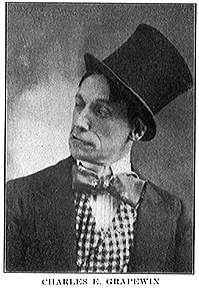Plot

The film is a silent character sketch that shows Chimmie Hicks (Charles E. Grapewin) imitating a man at the races winning and losing. Filmed on a bare stage with a dark backdrop, the sketch captures Chimmie in a three-piece suit and overcoat holding a racing program while watching a race taking place offstage. It shows him excitedly jumping and pantomiming that his horse has won the race. A second man enters the frame and gives Chimmie his winnings. Chimmie returns a sum of money to the booker to place another bet. The next race begins and Chimmie again shows great excitement, which quickly turns to despair and anger as the horse loses. The bookie returns, collects all of Chimmie's money and his watch. The gambler falls to his knees, shakes his arms toward the sky, and tears up his racing form, scattering the pieces on the ground. He rises and sadly begins to leave the stage. [7]